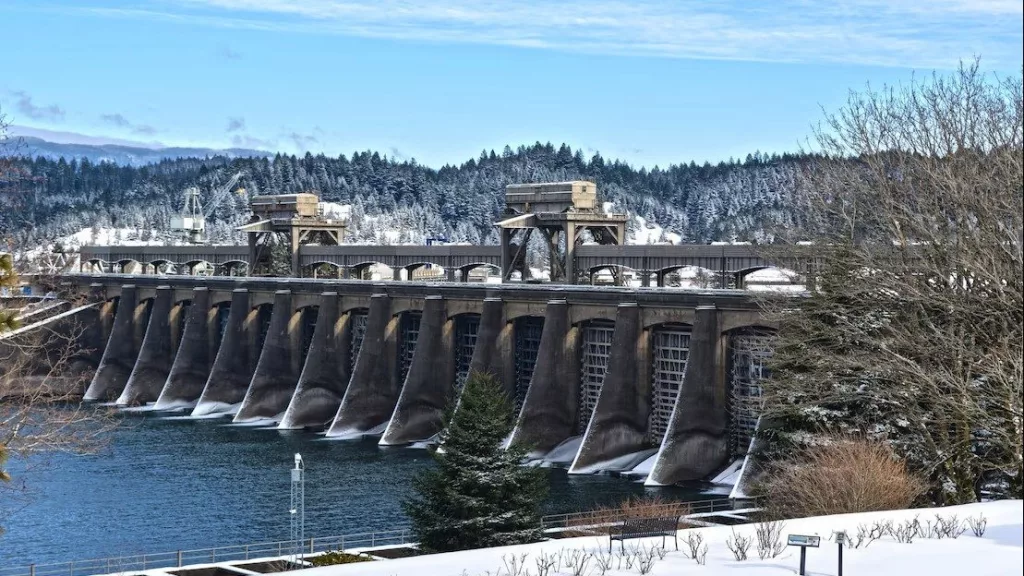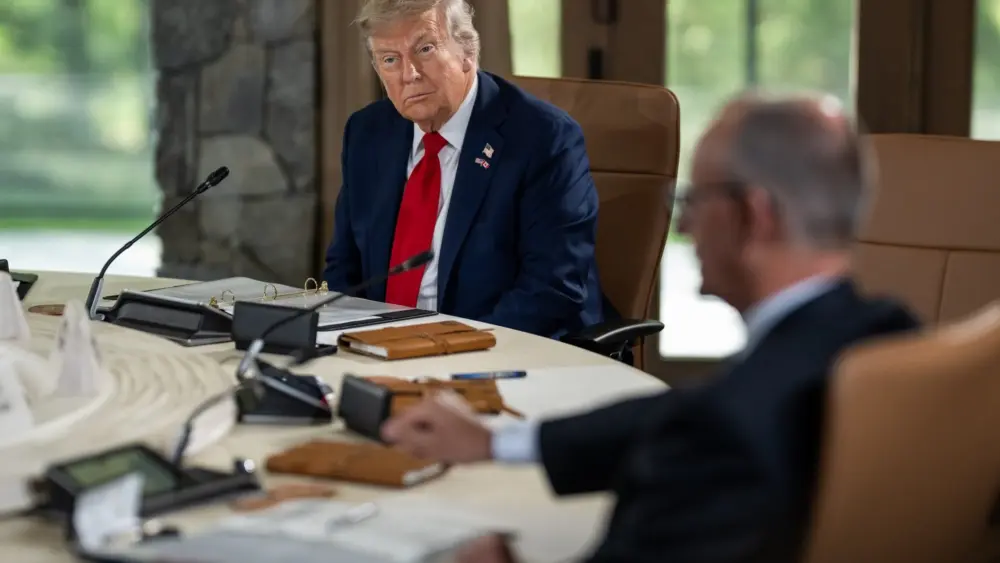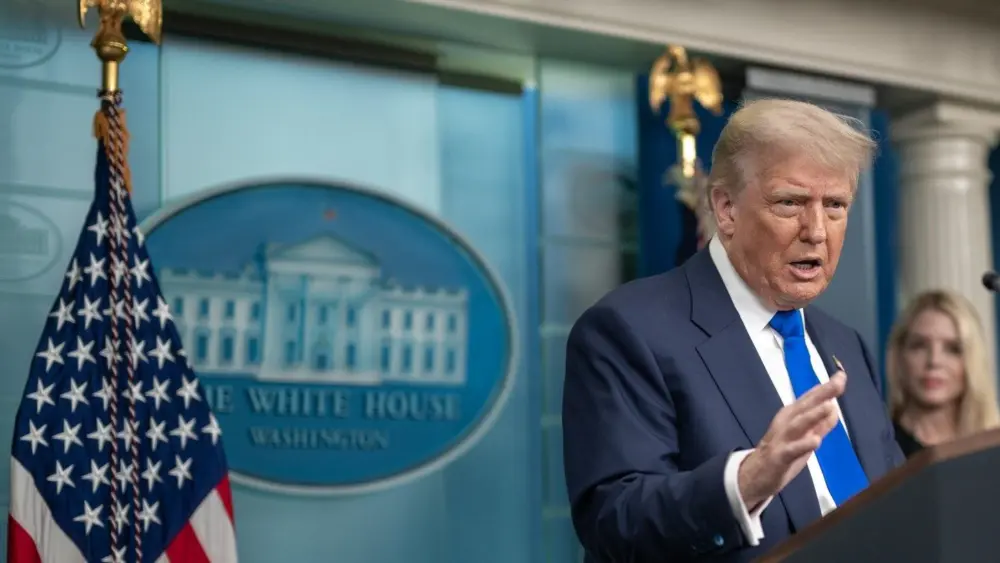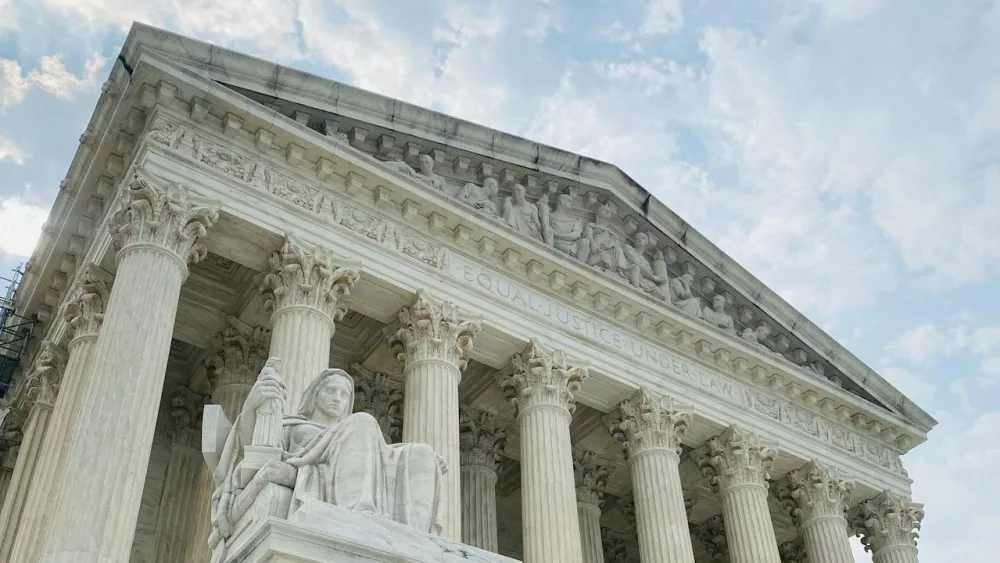Amid the Trump administration’s trade war and annexation threats, the work to update the 60-year-old treaty is paused after years of progress.
VANCOUVER, B.C. – The United States government has paused negotiations with Canada to finalize the renewal of a long-standing treaty covering the use of the Columbia River in the wake of President Donald Trump’s trade war with Canada and threats to annex the northern neighbor.
The United States and Canada last July reached an agreement in principle to manage the mighty Columbia River, an economic and environmental powerhouse that starts in Canada and flows through Washington and Oregon on its journey to the Pacific Ocean. The two countries negotiated for six years to update the 60-year-old treaty.
But talks to finalize the treaty are “currently paused” while the Trump administration reviews all pending international agreements, said Adrian Dix, head of the British Columbia Ministry of Energy and Climate Solutions in Canada.
Officials for the U.S. State Department and the White House have not responded to requests for comment.
Dix, speaking March 25 at a conference to update the public on treaty negotiations, said Trump’s verbal attacks on Canadian sovereignty have caused many Canadians to ponder the unfinished treaty.
“Some people have said we should cancel the Columbia River Treaty,” Dix said.
Dix said Trump’s comments such as calling for Canada to become the 51st U.S. state are troubling.
“It’s these really vicious attacks made on us that cause us concern,” Dix said. ”We continue to defend Canadian interests.”
Last year’s agreement in principle must still be approved by the U.S. Senate and the Canadian prime minister.
Former President Joe Biden and former Canadian Prime Minister Justin Trudeau announced the tentative agreement last July 11 and said it would last for 20 years. The treaty was originally ratified in 1961.
The agreement would reduce the amount of power the U.S. sends to Canada, but also will give the U.S. less storage capacity in Canadian reservoirs to protect downstream communities in Washington and Oregon from floods. The deal allows Canada more opportunities to import and export hydropower into the U.S. market, a crucial boost to both countries, Biden said last year.
The tentative deal came as the Northwest faces increased demand for power from the development of data centers and as more people adopt electric vehicles and appliances. A forecast estimates a 30% growth in need in the region between now and 2033, or an additional 7,400 megawatts per year.
Rachel Poynter, deputy assistant secretary for the State Department’s Bureau of Western Hemisphere Affairs, described three pillars of the updated treaty: protecting communities from flooding; advancing clean-energy goals through hydropower generation; plus “a vital and overdue emphasis on improving our ecosystems and collaboration with the region’s tribes and Indigenous nations.”
While the treaty was celebrated by politicians and energy administrators, conservationists and tribal leaders expressed concerns that it didn’t do enough to protect the environment, particularly endangered salmon and steelhead runs.
Joseph Bogaard of the Save Our Wild Salmon Coalition said Northwest conservation groups were “frustrated and disappointed” with the deal.
“This agreement maintains the primacy of power production and flood-risk management and continues to leave salmon and the health of the river uncertain and at risk,” Bogaard said recently. “This river is sick, and its fish are in trouble.”
Columbia River tribes in the 1800s signed treaties with the U.S. government ceding their lands but in turn reserving their rights to fish in the Columbia River basin forever.
The Columbia River’s drainage basin is roughly the size of Texas and includes parts of Washington, Oregon, Idaho, Montana, Utah, Wyoming and British Columbia.
The so-called Great River of the West begins in Canada but flows mostly in the U.S. on its 1,243-mile route to the Pacific Ocean. It forms most of the border between Washington and Oregon. Its tributaries provide 40% of U.S. hydropower, irrigate $8 billion in agriculture products and move 42 million tons of commercial cargo annually.
While running for president last year, Trump called the river a giant “faucet” in Canada that could be turned on to provide much-needed water to California.
To end the treaty would require either Canada or the United States to give 10 years’ notice. Neither side has done that.
U.S. Sen. Maria Cantwell (D-Wash.) said the treaty helps provide affordable electricity, flood control and salmon recovery.
“I hope this decade-long regional effort won’t be another casualty of President Trump’s unprovoked and senseless trade war with our Northern ally,” Cantwell said.
“I called President Biden and worked with the Canadian government in order to advance the Columbia River Treaty negotiations at the end of last year, helping tee up a final agreement that the incoming American and Canadian governments could quickly agree on and [which] would be ratified by the U.S. Senate,” Cantwell said.
The Trump administration also has been threatening tariffs as high as 25% on some goods from Canada. Trump initiated the tariffs in February.
Canada and the United States are each other’s largest trading partners, supporting millions of jobs in both countries.
“We remain committed to working with the United States,” Dix said. “It is in the interest of both countries to renew the treaty.”
At the same time, “we are prepared for any action the American government might take, and will continue to defend Canadian and British Columbian interests,” Dix said. “We will defend Canada.”
Visit cascadepbs.org/donate to support nonprofit, freely distributed, local journalism.





